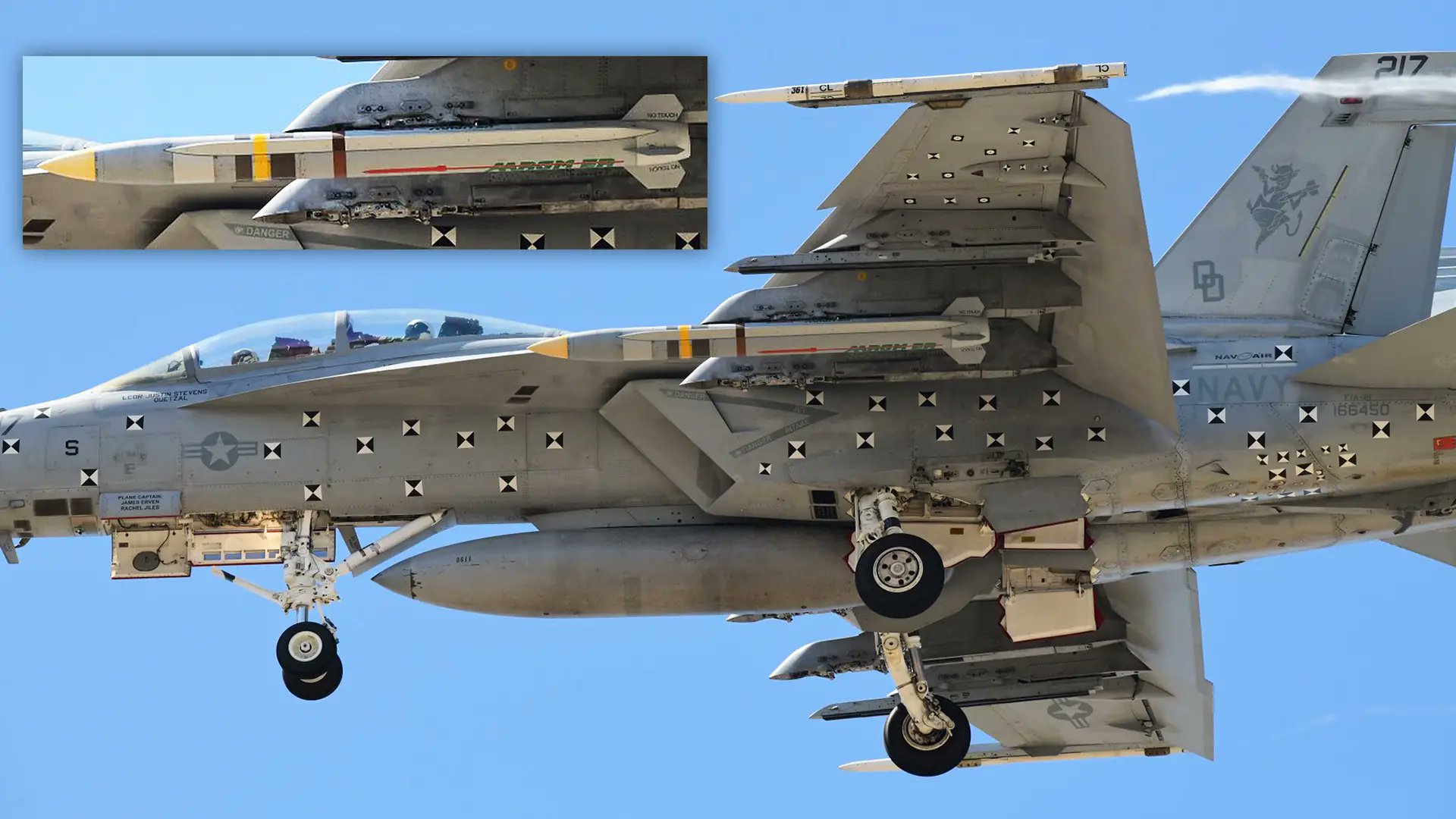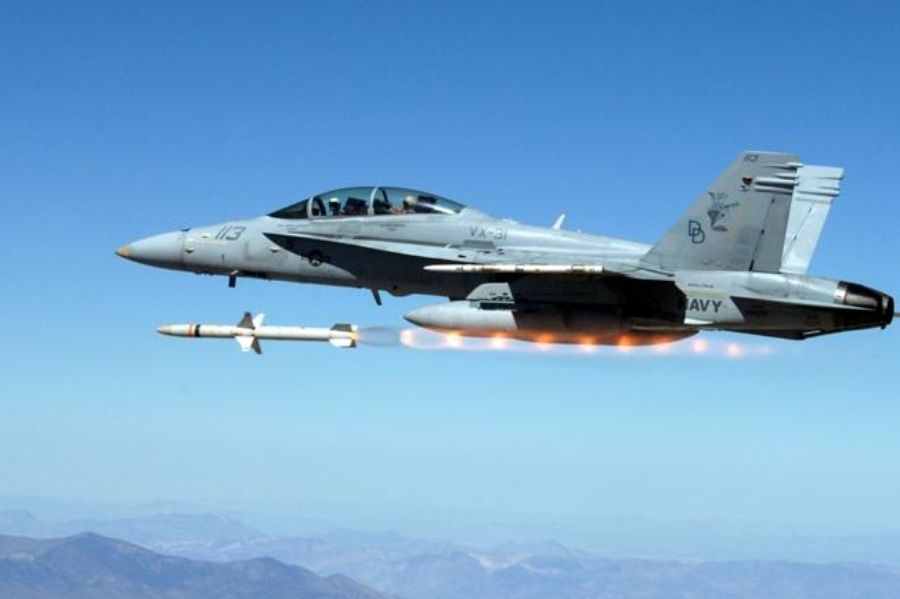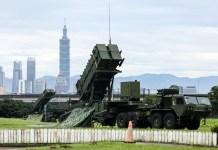The latest pictures of a US Navy F/A-18F Super Hornet, doing the rounds on social media, provide the best look so far at the new under-development AGM-88G Advanced Anti-Radiation Guided Missile-Extended Range missile (AARGM-ER).
The Super Hornet was photographed while flying around Point Mugu in California. It belongs to the Air Test and Evaluation Squadron 31 (VX-31), the “Dust Devils,” based at Naval Air Weapons Station China Lake in California.
The fighter jet was armed with the AGM-88G AARGM-ER, presumably for flight testing activities. The US Navy, in cooperation with Northrop Grumman, has been known to conduct various test launches of the prototype AGM-88Gs over the Point Mugu Sea Range off the coast of southern California.
Our best look yet at the @USNavy's new air defense busting missilehttps://t.co/PliAJq4L99 pic.twitter.com/wWX0gpESCW
— Fly High Aeromedia (@FHAeromedia) August 31, 2022
In the picture, a yellow band is visible around a section of the missile loaded onto the Super Hornet, which according to reports, indicates the missile is armed with a live warhead.
The AGM-88G AARGM-ER
The AARGM-ER is the latest variant of the AGM-88 series of anti-radiation missiles designed to home in on radiations from adversary’s emitters, particularly radars belonging to the air defense systems, and destroy them.
The first AGM-88 design dates back to the 1970s and recently gained much traction after the US supplied older missile variants to Ukraine to destroy Russian air defense systems.

The AARGM-ER combines the Guidance Section and Control Section of the AGM-88E with a new, larger rocket motor and a new warhead.

Apart from that, the latest variant features a new larger rocket motor and a modular warhead section. The missiles’ control surfaces have also been redesigned for increased lift and low-drag tail surfaces.
The exact operational characteristics of the AARGM-ER are unknown. Reports suggest that the missile will have roughly double the range and speed of the AGM-88E, which is capable of hitting targets at a distance of 128.74 kilometers and attaining a speed of up to Mach 2 – two times the speed of sound – during the terminal phase of its flight.
Anti-Radiation Capability Important Against Near-Peer Adversaries
The US Navy expects the missile to reach operational capability on its Super Hornets by 2023. The service also intends to integrate the missile with its EA-18G Growler electronic warfare jet and its F-35C Joint Strike Fighters.
One of the factors behind the AGM-88G design was the requirement of a missile to fit inside the F-35’s weapons bays because the earlier versions of the AGM-88 could not fit due to their large control fins. In the AARGM-ER, the control fins are present only at the rear of the missile body.
The missile is also incorporated in the US Air Force’s (USAF’s) F-35As and US Marine Corps F-35Bs. The F-35B has smaller internal weapon bays than the F-35A and C. Therefore, it can only carry the AARGM-ER externally.
The fifth-generation fighter is the primary asset in the US military, for suppression or destruction of enemy air defense (SEAD/DEAD) operations, in the event of a conflict with a near-peer adversary like China or Russia.
The US and its allies in the Indo-Pacific face a significant challenge from the Anti-Access/Area Denial (A2/AD) threat posed by China.
According to experts, air defense is central to China’s A2/AD posture. Therefore, over the years, the Chinese military has acquired an array of Surface-to-Air Missile (SAM) systems to shoot down the US and its allies’ aircraft.
This has also been witnessed to some extent in the current Ukraine conflict, where the US provided Ukraine with older variants of AGM-88 missiles after reports began emerging of Russian air defense systems limiting the capability of the Ukrainian air force to operate in the eastern Donbas region.
#Ukraine: The Ukrainian Air Force has released video showing for the first time ever US-supplied AGM-88 HARM anti-radar missiles being fired from their MiG-29 jets.
They seem to be fired in pairs from the inboard pylons where R-27 AAM would otherwise be carried. pic.twitter.com/o0OMTiwnow
— ?? Ukraine Weapons Tracker (@UAWeapons) August 30, 2022
For the US to establish control of the skies and ensure freedom of maneuverability for friendly air forces in a potential future war with China, the capability to destroy the Chinese air defense systems is paramount.
According to experts, the US’ capabilities are also bolstered through its allies’ aircraft. Therefore, the US shares its SEAD/DEAD capabilities with its partners. For example, in June, the US State Department approved the sale of AGM-88E AARGMs to Australia for an estimated $94 million.
The Royal Australian Air Force (RAAF) has a dedicated Electronic Warfare unit equipped with the EA-18G that can deploy the AGM-88Es, which could work closely with their counterparts in the US Navy or Marine Corps during a crisis in the Indo-Pacific.
- Contact the author at tanmaykadam700@gmail.com
- Follow EurAsian Times on Google News




